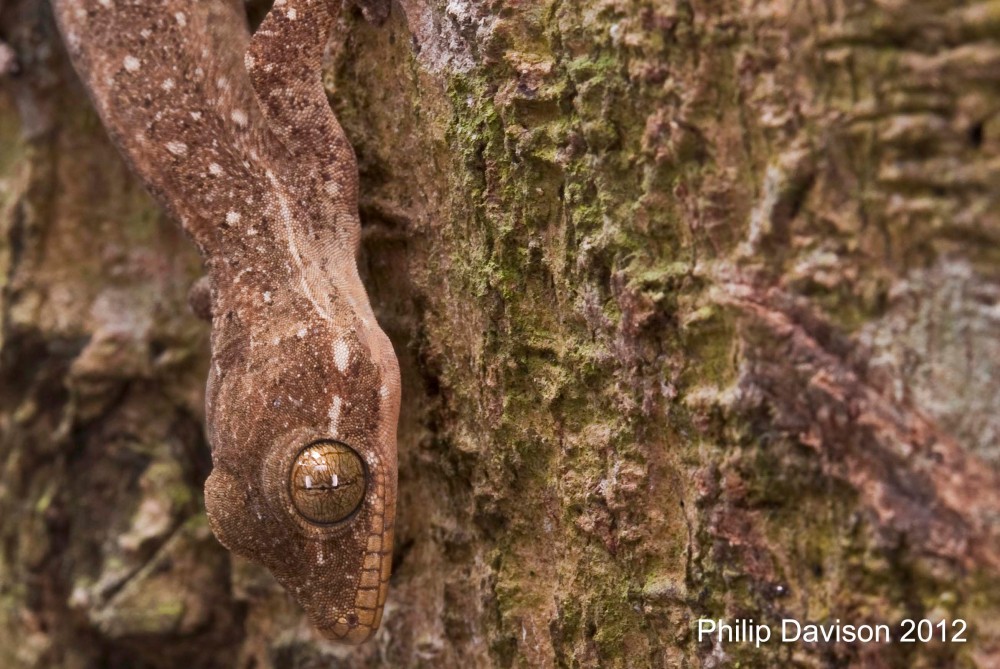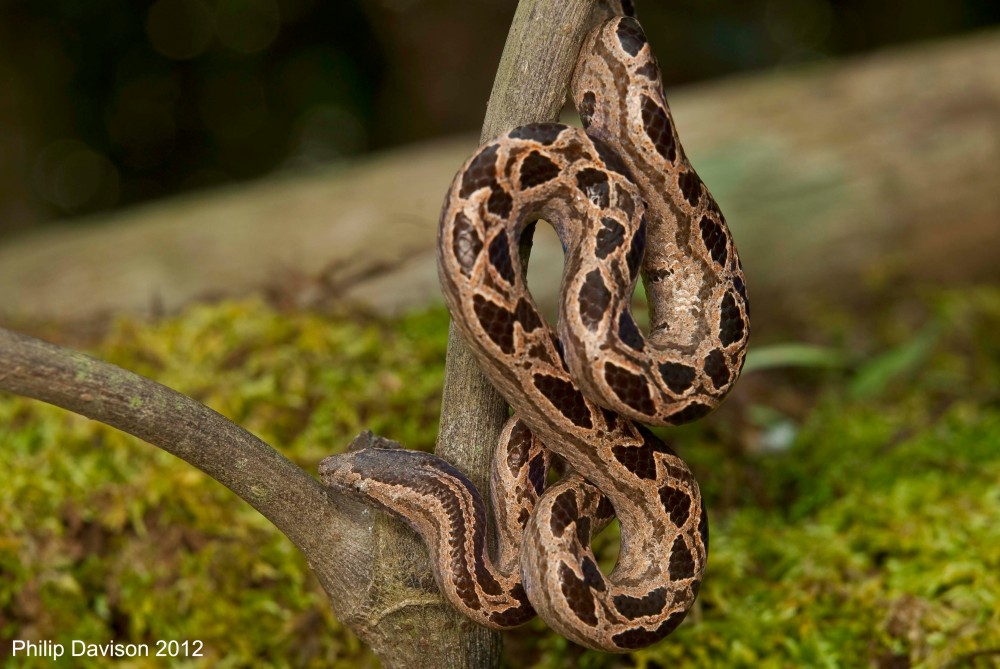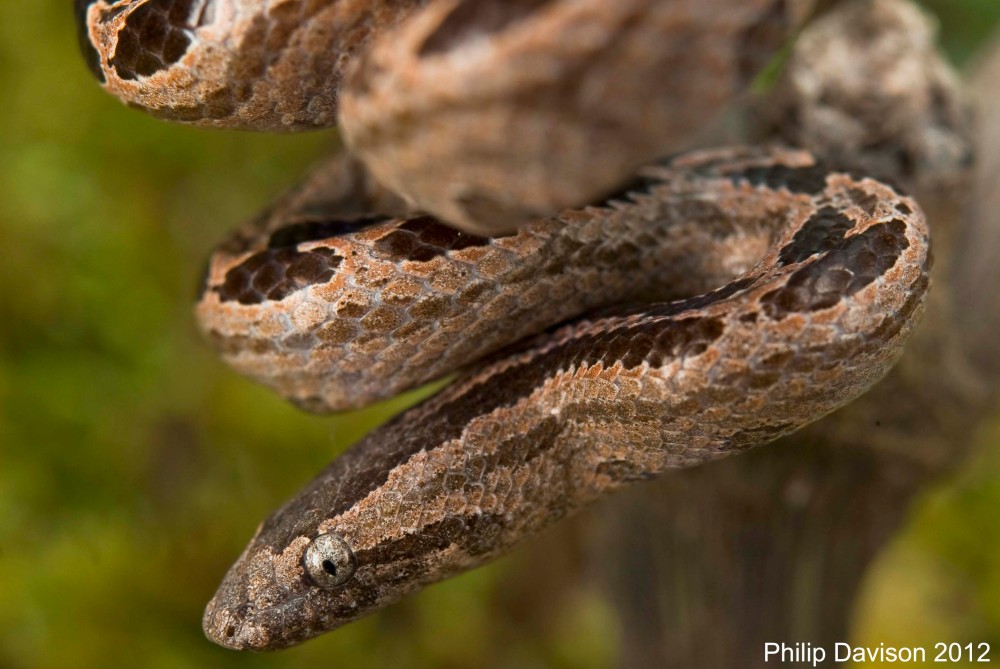Felipe del Bosque Blog January 23rd 2012
Bone Dry
The dry season is really upon us now. There has been little or no rain for several weeks. The forest is maintaining its green aspect; as yet things have not started to look brown and wilted, but it won’t be long before they do.
The dry conditions are all that is needed to stimulate the trees into flowering. There are several large Ajo or Garlic Trees, (Caryocar costaricense), around the grounds and they have now started to produce the bright yellow blooms that have the distinct aroma of garlic. Garlic may seem like a strange perfume for a tree to release into the atmosphere but here in a Costa Rican rainforest where no wind blows, much of the pollination is done by bats. Nectar feeding bats prefer musky smells and it is the heavy scent of garlic that attracts the bats in, so the Garlic Tree is one of many bat pollinated trees that we find here.
One of the Fruta Dorada or Nutmeg Trees, (Virola guatemalensis), was recently producing fruit. The Monkey Comb Tree, (Apeiba tibourbou), is both flowering and producing the distinctive spiny spherical fruits that give it the name.
The Big Hullabaloo
One of my least favorite aspects of the start of the dry season is the mass emerge of the cicadas. It is not the insects themselves that I object to, but rather the incessant day long din they make. Sometimes the noise is so loud it is hard to make yourself heard.
Your auditory apparatus may receive some relief if a cloud blocks out the sun and the temperature momentarily drops because so will the sound of the cicadas, from that deafening high pitched oscillating racket to a more acceptable soft hiss. But once the sun re-emerges and the temperature rapidly climbs so do the cicada calls which will reach a crescendo in double time.
By late afternoon, when the sun sits lower in the western sky, the air cools and so the noise begins to die. The respite is short lived though. Moments into enjoying the relative silence, up go the sundown cicadas. The ruckus continues unabated until that time when the sun truly sets and then it is as if someone has hit a switch and they all go off together. The nightly chorus of the crickets and katydids is quite soothing in comparison.
On the Osa Peninsula there are many species of cicada and they mostly have a two yearly life cycle. For at least 23 months of the year, the cicada lives under the ground in the nymphal stage. Here it feeds by tapping into the root systems of the plants and feeding on the sap.
By January, the last nymphal stage leaves the ground, climbs up into the vegetation above and molts for the final time. Out emerges the winged, reproductive, dispersal stage in the life history of the organism. It rapidly swells in body size and the wings which at first are crumpled now slowly expand as body fluid is pumped through the veins. The imago is now ready to fly into the canopy. The male calls, the female responds, they pair up and lay eggs on in the leaves. When the larvae hatch they fall to the ground and burrow into the soil to complete another 23 months. The adult stage only lives 4 – 6 weeks and so your ears have but a couple of months to endure the persistent noise.
Turnip Poisoning
One of the commoner reptiles around the grounds of Bosque is the Central American Smooth Gecko, (Thecadactylus rapicauda). At night in your cabin, should you hear a high pitched chucking sound it will either be this species or a smaller species the Mediterranean House Gecko, (Hemidactylus frenatus).
The Central American Smooth Gecko is also known as the Turnip-tailed Gecko as it stores fat in its tail which then becomes very large and swollen at the base. There is a tale that the local people believe them to be deadly poisonous but as with many other such tales, the story holds no truth and they are in fact completely harmless.
I always seem to have two or three of these geckoes residing in my cabin. Due to the fact that they eat insects, I am quite happy to have them there. They grow to a good 8 inches in length as an adult but this individual of 2 inches in length must have been no more than a few months old.
Philip is a biologist, writer and photographer as well as the onsite naturalist guide at Bosque del Cabo Rainforest lodge on the Osa Peninsula, Costa Rica.
Photo Feature
Rare Find
One night after dinner at the lodge I was asked by one the guests if I would come and remove an unidentified snake from the deck of his cabin. From his description, I thought I was going to find a harmless Cat-eyed Snake. When I got there, I was pleasantly surprised to find a snake I had only previously encountered 4 or 5 times over the past 12 years I have lived here, a Dwarf Boa, (Ungaliophis panamensis). According to the data there have only been 17 collected specimens in Costa Rica, so I have an extra 30% recording at Bosque to add to that total.
Dwarf Boas are not generally encountered at ground level, their home is the tree tops where they feed on small rodents and Anolis lizards. They have been found at ground level though, being cited as fossorial as well as arboreal and that is where all my finds have been.
Text and Photographs are taken from the forthcoming book:
The Natural History of Bosque del Cabo by Philip Davison
Temperature and Rainfall
Average Daily Temp High 87°F. Average Daily Temp Low 72°F.
Average Daily Rainfall 0.00 ins. Total Weekly Rainfall 0.00 ins
Average Daily Temp High 29.6°C. Average Daily Temp Low 21.9°C.
Average Daily Rainfall 0.00 mm. Total Weekly Rainfall 0.00 mm
Species List for the Week
Mammals
- Howler Monkey
- Spider Monkey
- White-faced Monkey
- White-nosed Coati
- Agouti
- Alfaros Pygmy Squirrel
- Red-tailed Squirrel
- Vesper Rat
Birds
- Red-lored Amazon
- Scarlet Macaws
- Crested Guan
- Great Curassow
- Grey-necked Woodrail
- Mangrove Black Hawk
- Roadside Hawk
- White Hawk
- Lineated Woodpecker
- Pale-billed Woodpecker
- Black-hooded Antshrike
- Chestnut-backed Antbird
- Common Paureque
- Crested Owl
- Short-billed Pigeon
- White-tipped Dove
- Brown Pelican
- Long-billed Hermit
- Chestnut-mandibled Toucan
- Blue-crowned Manakin
- Red-capped Manakin
- Cherrie’s Tanager
- Bright-rumped Atilla
- Dusky-capped Flycatcher
- Great Kiskadee
- Great Tinamou
- Black-throated Trogon
- House Wren
- Black Vulture
- Turkey Vulture
Reptiles
- Barred Ameiva
- Cat-eyed Snake
- Common Basilisk
- Clawless Gecko
- Golfo Dulce Anolis
- Pug Nosed Anole
Amphibians
- Banana Frog
- Marine Toad
- Red-eyed Green Tree Frog
- Black and Green Poison Arrow Frog
- Fitzinger’s Rain Frog
- Masked Smilisca
- Smokey Jungle Frog
- Stejneger’s Dirt Frog
Butterflies
- Anartia Fatima
- Anartia jatrophae
- Caligo atreus
- Dione juno
- Dryas iulia
- Glutophrissa drusilla
- Heliconius erato
- Heliconius hecale
- Heliconius ismenius
- Heliconius sapho
- Heraclides cresphontes
- Hermeuptychia hermes
- Marpesia berania
- Metacharis victrix
- Morpho helenor
- Morpho Menelaus
- Opsiphanes tamarindi
- Pareuptychia ocirrhoe
- Philaetria dido
- Phoebis argante
- Phoebis sennae
- Pierella helvina
- Pierella luna
- Pyrgus oileus
- Pyrisitia nise
- Pyrrhogyra crameri
- Siproeta stelenes
Plants
- Aphelandra golfodulcensis Flowering
- Bamboo Orchid Flowering
- Black Alligator Tree Fruiting
- Calabash flowering and fruiting
- Cannonball Tree Flowering and Fruiting
- Clusia rosea Flowering
- Garlic Tree Flowering
- Golden Fruit Tree Fruiting
- Milky Tree Fruiting
- Monkey Comb Tree Flowering and Fruiting
- Figs Fruiting
- Mountain Rose Flowering
- Ox Eye Vine Fruit
- Stinky Toe Fruiting






